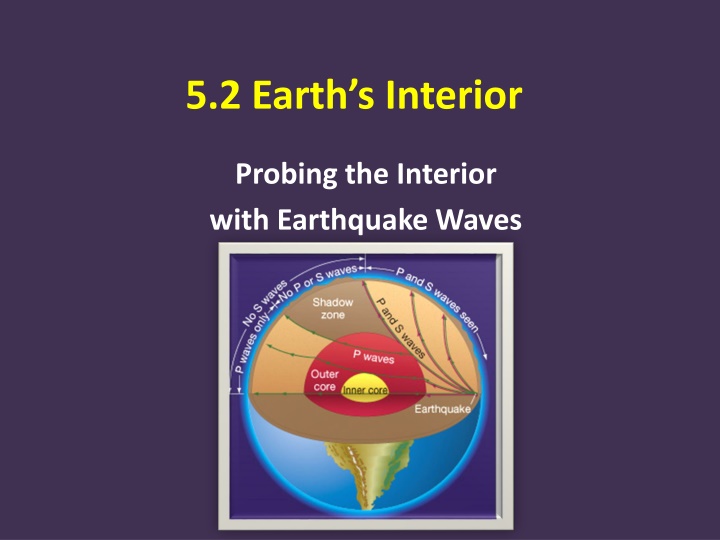
Exploring Earth's Interior Through Seismic Waves
Discover how seismic waves generated by earthquakes provide insights into the composition and structure of Earth's interior. Learn about the different types of seismic waves, their characteristics, and how they help scientists study the layers beneath the Earth's surface.
Download Presentation

Please find below an Image/Link to download the presentation.
The content on the website is provided AS IS for your information and personal use only. It may not be sold, licensed, or shared on other websites without obtaining consent from the author. If you encounter any issues during the download, it is possible that the publisher has removed the file from their server.
You are allowed to download the files provided on this website for personal or commercial use, subject to the condition that they are used lawfully. All files are the property of their respective owners.
The content on the website is provided AS IS for your information and personal use only. It may not be sold, licensed, or shared on other websites without obtaining consent from the author.
E N D
Presentation Transcript
5.2 Earths Interior Probing the Interior with Earthquake Waves
When earthquakes occur within the Earth, the generate seismic waves that travel outward from the location of the quake through the body of Earth.
The speed of the seismic waves depends on the properties of the material though which they move. From the wave s speed plus its precise location on the Earth s surface, we can deduce a picture of Earth s interior along the path of that wave.
There are two main types of seismic waves on Earth: P waves and S waves.
P-Waves and S-Waves P-waves (Primary Waves) are the fastest type of seismic wave. As P-waves travel, the surrounding rock is repeatedly compressed and then stretched. S-waves (Secondary Waves) arrive after P-waves because they travel more slowly. The rock is shifted up and down or side to side as the wave travels through it.
P-waves temporarily change the volume of the material they pass through by compression and then expansion. P-waves can go through the fluid matter of earth, such as large bodies of water and its plastic inner layers, such as the inner core.
S waves temporarily change the shape of the material they pass through. Gases and fluids will not transmit S waves because they do not rebound elastically to their original shape.
If a laboratory on the far side of the Earth from an earthquake detects P-waves but no S-waves, the seismic waves must have encountered a region of liquid on their way from the earthquake.
